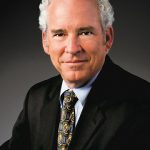 WHEN FARMING ISN’T “FARMING”
WHEN FARMING ISN’T “FARMING”
How do “business” and “farming” interact within the coverage form?
Writing farms without a clear understanding of how liability
coverage is provided … can be dangerous, for both the insured and their agent or broker.
By Casey Roberts, CIC, ACSR, AFIS
When one is asked to write liability coverage for a farming operation, the immediate expectation among most is that the coverage will be provided by either an ISO or AAIS-based farm liability policy. Yes, there are proprietary forms out there and sometimes a CGL is used, but more often than not a farm liability form will be used, and most of those are initially based upon an ISO or AAIS product.
What I find curious about the ISO Farm Liability Coverage Form (FLCF) is that it does not mention “farming” in the liability insuring agreement. In fact, the insurance practitioner (and their client) must go on a bit of a search to determine how farming is covered.
For example, let’s review the FL 00 20. This is the ISO Farm Liability Coverage Form. The 04 16 is the most current edition and will be our focus.
In reviewing the liability insuring agreement there is no mention of farming. Most of the insuring agreement is word for word the same as found in the ISO CGL. This is for good reason: This is language that has stood the proverbial test of time as well as multiple reviews by the courts.
It is a bit of a circuitous route to find how “business” and “farming” interact within the coverage form. The policy has a specific exclusion for business. We find that the business exclusion necessitates the reader to peruse the definition of business. Within that definition is an exception for farming as defined. Let’s see how this wording applies.
Here is the business exclusion in its entirety (remember that it is preceded by the phrase … “This insurance does not apply to”):
- Business Pursuits
“Bodily injury” or “property damage” arising out of or in connection with a “business” engaged in by an “insured”. This exclusion applies but is not limited to an act or omission, regardless of its nature or circumstance, involving a service or duty rendered, promised, owed, or implied to be provided because of the nature of the “business”.
This exclusion does not apply to an “insured” under the age of 21 years involved in a part-time or occasional, self-employed “business” with no employees.
But in the event of “property damage” to which this exception may apply, the person who sustains the “property damage” must be someone other than an “insured”.
Okay, but what is “business”?
- “Business” means a trade, profession, occupation, enterprise or activity, other than:
- “Agritainment”;
- “Farming”; or
- “Custom farming”;
which is engaged in for the purpose of monetary or other compensation.
Reading this as shown by the coverage form, there is an exclusion for business, but the definition of business does not include farming. Ergo, farming (as defined and reviewed in the next few lines) is a covered activity by the policy. Also provided for coverage is “custom farming,” but that is a topic for another day.
So, you ask, what is “farming”?
- “Farming”:
- Means the operation of an agricultural or aquacultural enterprise, and includes the operation of roadside stands, on your farm premises, maintained solely for the sale of farm products produced principally by you. Unless specifically indicated in the Declarations, “farming” does not include:
(1) Retail activity other than that described above; or
(2) Mechanized processing operations;
- However, “farming” does not include the operation of:
(1) Any “agritainment” on your farm premises; or
(2) Any retail activity or any mechanized processing operations performed, in whole or in part, for “agritainment”.
I warned you that it is a bit of a circuitous trip to get to what we are seeking: how farming is covered by the Farm Liability Coverage Form.
Here is what we now know:
- The Farm Liability Coverage Form excludes BI and PD losses caused by business pursuits of the insured.
- Business (as defined) does not include farming.
- Farming includes multiple operations that one might expect to find when a party engages in agricultural or aquacultural pursuits (yes, those are covered.)
- However, farming does not include:
- When the farmer engages in a retail activity other than that specifically defined in the word farming
- Mechanized processing operations of the insured
Lastly, no agritainment is covered.
So, let’s parse this language and break it down so that our end user of the farm liability product, the farmer, as well as those of us who sell and service the product, can see what is and isn’t covered by the policy language.
Farming means the operation of an agricultural or aquacultural enterprise, and includes the operation of roadside stands, on your farm premises, maintained solely for the sale of farm products produced principally by you.
I think we can agree that minimal time needs to be spent on what constitutes an agricultural or aquacultural enterprise. As those words are not defined by the policy, they will then take their standard meanings as defined by commonly used dictionaries.
Merriam-Webster.com defines agriculture as “the science, art, or practice of cultivating the soil, producing crops, and raising livestock and in varying degrees the preparation and marketing of the resulting products,” while defining aquaculture as “the cultivation of aquatic organisms (such as fish or shellfish) especially for food.” Little mystery here for ether definition.
The remainder of that first sentence of the definition of farming, however, does provide us with some challenges: “includes the operation of roadside stands, on your farm premises, maintained solely for the sale of farm products produced principally by you.”
When the insured operates a roadside stand on their farm premises and the sale of products from that location is made up of their farm products—coverage will apply. But what about if they sell someone else’s products from that roadside stand? Where is their coverage?
The policy states: “maintained solely for the sale of farm products produced principally by you.”
Are they maintaining that farm stand only for farm products produced by them? If not, might we have an issue? Also, what if they operate a farm stand in town, perhaps at a farmers’ market, is that not covered in the definition of farming?
A close reading would lead us to understand that, if an insured desires coverage for those two types of situations, their agent or broker would be best advised to have the underwriter note on their Declarations that coverage is intended for these exceptions. Remember the closing clause in that first paragraph of the definition: “Unless specifically indicated in the Declarations, ‘farming’ does not include: (1) Retail activity other than that described above.”
In my conversations with farm underwriters at numerous insurers, I have found that most (but not all) are willing to add/indicate on the Declarations that they will provide liability coverage for the operation of an insured’s farm stands in town at a farmers’ market. More often than not, however, it will also be tied to a certain amount of retail activity as measured in terms of gross sales/receipts. The amount of retail activity allowed will vary from carrier to carrier.
That brings us to the short phrase “mechanized processing operations.” When the insured modifies their farm product using a mechanized processing operation, their liability coverage evaporates. For example, the farmer who grows wine grapes harvests their grapes and hauls them to a winery. Since all the farmer is doing is growing, harvesting and hauling them to another for them to process, the Farm Liability Coverage Form would be adequate.
Should that same farmer decide to make their own wine, that is a mechanized processing operation and a CGL would be needed. The same could be said of the dairy operator who milks their cows and then hauls the milk to a creamery or processor. The farm liability form should suffice. That changes, however, should that same farmer decide to bottle their own milk or make cheese. That then becomes the bailiwick of the CGL.
Finally, we see that there is no coverage for agritainment.
3.“Agritainment” means an agricultural or aquacultural related activity or enterprise that is primarily operated on the “insured location”:
- For the purposes of tourism
or entertainment; and - Engaged in for monetary
or other compensation.
When reviewing this final portion of the definition of farming we may note a few considerations:
- We are excluding agritainment primarily operated on the insured location (greater than 50%);
- If that agritainment is operated for the purposes of entertainment or tourism; and
- Is engaged in for compensation—monetary or otherwise.
Agritainment (aka, agritourism) is a common occurrence in many parts of the United States. It has been encouraged by local and state governments, often with the intent to get people to understand how farms work and to get folks back in touch with their land-based roots (pun intended).
It is known that there is much misunderstanding about how farms work—especially given the fact that most folks’ only interaction with anything related to farming is at their local grocery store. In order to assist in combatting this lack of knowledge and understanding, agritainment has blossomed.
We also do not want to discount the fact that if the farmer can find another use for their property that helps them to drive greater revenues, they, like most businesspeople, will pursue it.
Among the varied uses on a farm location that are agritainment driven, we might see these:
- Weddings
- Farm tours
- School visits
- Corn mazes
- Pumpkin patches
- “You pick” operations—fruits, row crops, orchards, Christmas trees, et al.
- Camping
- Various farm and non-farm related classes—canning, brewing, cider making, etc.
- Hunting of all sorts
While an insurer may not be interested in picking up the exposure for all of these, many are often handled via a CGL or utilizing ISO’s Agritainment liability endorsement, FL 05 01 0416.
Writing farms can be challenging enough in this day and age. Writing farms without a clear understanding of how liability coverage is provided by the FLCF can be dangerous, for both the insured and their agent or broker.
 The author
The author
Casey Roberts, CIC, ACSR, AFIS, is the principal and founder of Laurus Insurance Consulting, specializing in providing continuing education classes, sales coaching, sales management and expert witness work. Established in 2010, the name “Laurus” (Loris) was chosen with intent and purpose. Derived from Latin and meaning “victory” or “success,” Casey strives to make every interaction just that, a success/victory for all concerned. Prior to founding his consulting firm, Casey spent 34 years on the retail side of the insurance business as an agency owner, personal lines and commercial lines producer and sales manager. He has been teaching CE classes for some 25 years. He attained his CIC designation in 1989, his ACSR in 1992 and his AFIS in 2005. His past commitments to the industry include stints as a director for the Independent Insurance Agents and Brokers of California and as a director for the Agriculture and Farm Insurance Specialist (AFIS) designation, as well as serving on his state’s agribusiness insurance committee. He currently serves on the California Department of Insurance’s Curriculum board.




